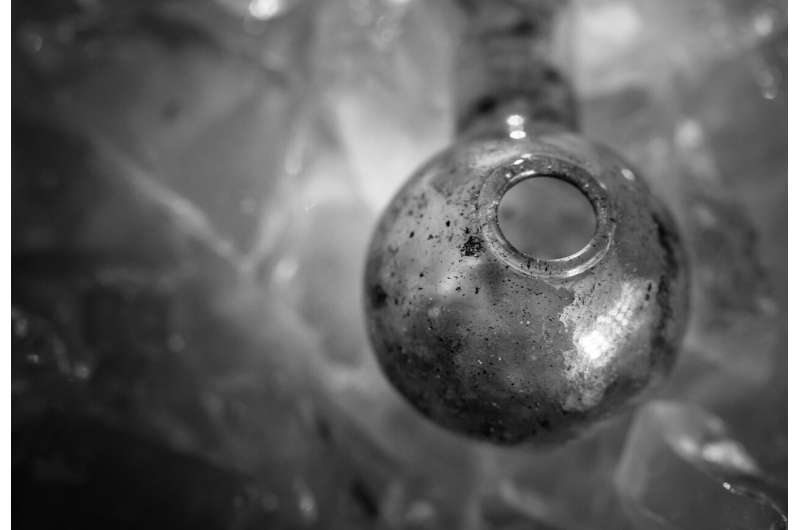
Rural America has lengthy suffered from an epidemic of methamphetamine use, which accounts for 1000’s of drug overdoses and deaths yearly.
William Garriott, an anthropologist at Drake College, explored meth’s influence on communities and on a regular basis life within the U.S. in his 2011 ebook “Policing Methamphetamine: Narcopolitics in Rural America.” Since then, the issue has solely gotten worse.
The agricultural information website the Day by day Yonder spoke with Garriott about what has been driving the surge in meth use in latest many years and what prompted him to deal with meth in his work. The Dialog has collaborated with The Day by day Yonder to share the interview with you.
How’d you get thinking about methamphetamine as a tutorial topic?
Once I began my Ph.D in anthropology in 2003, I knew I wished to deal with the Appalachian area of the USA. On the time, I used to be interested by spiritual life within the area and its contribution to the expansion of Pentecostalism and evangelicalism all over the world.
However I had additionally simply taken a course with medical anthropologist Arthur Kleinman. He says that we must always search to know “what’s at stake” or “what actually issues” for folks of their on a regular basis lives.
And what actually mattered to folks in locations like japanese Kentucky on the time was medicine. We now know we have been at first of the opioid epidemic. OxyContin was already taking a toll on native communities, and there was little nationwide concern as a result of it was seen as an remoted regional drawback (the derogatory time period “hillbilly heroin” was getting thrown round loads on the time).
Once I began my dissertation analysis, methamphetamine had develop into the first concern, each regionally and nationally. When the Patriot Act was reauthorized in 2005, the one vital addition was anti-meth laws known as the Fight Meth Epidemic Act.
In what sense was the meth surge of the ’90s and early 2000s a rural phenomenon?
Plenty of methods. The web gave folks entry to meth recipes, and meth cooks tended to be situated in rural areas. It was simpler to cover and entry key substances like anhydrous ammonia. The truth is, the variety of meth labs grew so shortly that vast swaths of the agricultural U.S. have been labeled Excessive Depth Drug Trafficking Areas—one thing that had solely been utilized to cities like New York and Los Angeles earlier than.
The agricultural economic system was additionally altering. Jobs weren’t paying as properly or have been going away altogether. Meth discovered a distinct segment as a sort of efficiency enhancement drug for folks working lengthy hours at bodily demanding jobs—one thing I noticed within the poultry business in West Virginia, journalist Nick Reding discovered within the pork business in Iowa, and anthropologist Jason Pine discovered normally in Missouri. Finally some people simply left these jobs to work within the meth economic system full time.
I feel it is also necessary to say how meth was being portrayed in nationwide media because the drug of selection for poor white folks. From there, it does not take a lot to attach it to rural communities, given how these communities are sometimes regarded as predominantly white and poor within the public creativeness.
Anti-meth applications just like the Montana Meth Venture and Faces of Meth performed a giant half on this. They have been very visible campaigns that centered on the injury meth does to the physique. All the folks they pictured seemed to be white. That they had sores, scars and sunken eyes. Additionally they have been typically lacking tooth. All of that invokes plenty of stereotypes. Sociologists Travis Linnemann and Tyler Wall have an awesome journal article on this.
With all of that stated, it is very important understand that meth is simply as a lot an city and suburban drawback as a rural one, notably now. Sociologist Miriam Boeri has made this level actually clearly. Additionally, one thing to remember about Faces of Meth: It was created by a jail deputy in Oregon who used mugshots of individuals booked into the county jail. The jail is in Portland, so the parents featured most likely weren’t dwelling in rural communities on the time.
Your ebook was known as ‘Policing Methamphetamine.’ I am curious—what made you zero in on that aspect of meth tradition, its policing?
Once I started my analysis, I believed my focus could be on the remedy experiences of people that use methamphetamine. However what I shortly discovered was that these experiences could not be understood outdoors of the legal justice system. Many individuals solely acquired remedy after an arrest, and sometimes as a situation of probation. One officer informed me that folks got here as much as him on the road and requested to be taken to jail so they may cease utilizing medicine. Group members additionally typically channeled their issues into requires elevated enforcement.
Looking back, none of this could have been stunning. U.S. drug coverage has lengthy centered on enforcement. This places police and the legal justice system on the entrance strains each time and wherever a brand new drug drawback emerges. There isn’t any exception to this dynamic for rural communities. What’s extra, the justice system is more likely to be probably the most seen and well-resourced state establishment in the neighborhood (which isn’t to say it’s sufficiently resourced).
What are the questions you continue to have about meth in American life?
At present, probably the most urgent query from my perspective is how meth and opioids are converging. One of many extra unlucky developments is that folks have began injecting meth. There may be additionally the broad contamination of the drug provide with fentanyl.
All of this creates extra public well being challenges, notably in rural communities.
One thing else I am enthusiastic about loads is what occurs when medicine like meth cease making headlines and get changed by the following drug scourge. At present, persons are more likely to speak about fentanyl than meth. That is comprehensible given the overdose dangers, in addition to the best way information media works. However what are the results of this for the communities the place meth continues to be a significant concern?
Greater image, I am enthusiastic about meth within the broader context of U.S. drug coverage. My subsequent ebook is about marijuana legalization and justice reform. It has been fascinating as a result of the dialog round hashish is so totally different from the dialog round meth. One of many huge questions I’ve is that if the sorts of reforms which can be following hashish legalization will do something to alter the dialog across the broader punitive method to medicine. The controversy taking place proper now in Oregon over Measure 110 is one thing I am watching very carefully. It is a main take a look at case for whether or not or not a special, much less punitive method to medicine is feasible.
The Dialog
This text is republished from The Dialog below a Artistic Commons license. Learn the unique article.![]()
Quotation:
Q&A: How meth grew to become an epidemic in America, and what’s taking place now that it is pale from the headlines (2024, March 16)
retrieved 17 March 2024
from
This doc is topic to copyright. Other than any truthful dealing for the aim of personal examine or analysis, no
half could also be reproduced with out the written permission. The content material is offered for data functions solely.







